Salmon farmers are feeling the pinch as rampant inflation impacts their operations, a trend that is all too common with countless other businesses across the north and north-east.
The sector is facing growing price pressures on a raft of essentials such as oil, diesel, electricity and oxygen, while fish feed – a vital cog in the industry’s wheel – continues to see costs soar inexorably upwards.
Andrew Watson, spokesman for trade body Salmon Scotland said: “Like all sectors, salmon farmers are facing massive rises in their costs, particularly on feed, fuel and electricity.
“Average wages are already well above the Scottish national average, but some companies have taken the decision to pay their staff more to help them to cope with the cost-of-living crisis.
“Importantly, we’re not seeing the price of salmon going up in supermarkets.
“At just over £3 for two adult portions Scottish salmon continues to be a healthy and affordable product that people should continue to put on their plate.”
Scottish Sea Farms rising to the challenge
Scottish Sea Farms (SSF), with operations in Oban, Orkney, Shetland, Mull and Stirling, is no exception to facing the inflationary challenges, with costs rising to a rate and level “never seen before”.
Many of these price increases are completely external and could not have been foreseen, such as the pandemic and war in Ukraine, helping to drive UK inflation to its highest level in decades.
Ewan Mackintosh, head of operations, SFF, said: “As with many businesses, we are seeing a steep rise in costs, stemming from a range of factors.
“At a global level, the Covid pandemic, Brexit and war in Ukraine have all contributed to uncertainty and higher prices, while closer to home we’re seeing energy prices and inflation soar.
“The result is higher prices across almost every area of doing business from fish feed to processing and packaging, through to transportation and logistics.”
Feed costs up 29% in first four months of 2022
Just how fast and dramatic the cost increases have been can be gauged by SFF managing director Jim Gallagher’s observations on the first four months of this year.
Mr Gallagher cited one of the company’s largest overheads – fish feed – rising 29%, with further increases expected during the rest of this year.
Even steeper growth in input costs have come in the guise of oxygen (+32%), oil and diesel (+48%) and electricity (+53%).
All of these are essential to SSF’s business but it is not just the company that is having to face the challenges – it is its employees too.
They are confronted with ever-rising bills for everything from heating their homes to their weekly shop.
SFF had been paying workers the Real Living Wage of £9.90 per hour for five years.
Earlier this year it decided to up minimum payments for its lower income earners to £10.40 per hour.
Mr Mackintosh said: “Every business says it – that it values its people – but Scottish Sea Farms really does walk the talk in this regard, adapting to the evolving needs and wants of today’s workforce.
To illustrate the point, he highlighted the firm’s enhanced maternity and paternity packages and discounted childcare, as well as it becoming a Real Living Wage employer and then “going above and beyond that earlier this year to help our lower income earners withstand the worst of the current cost-of-living crisis”.
He added: “We want our people to work with us for the long term, in the same way we do our suppliers and customers, so we’re always looking at what more we could do.”
Echoing Mr Gallagher’s comments about fish feed, Mr Mackintosh highlighted how natural occurring weather patterns can also influence cost.
And transport is increasingly coming under the business microscope as stratospheric fuel price rises feed through to the pumps.
Prolonged US and Canada drought trickles down to feed costs
“In terms of challenges specific to food producers, animal feed is one of the largest overheads for any livestock farmer,” Mr Mackintosh said.
“Recent years, however, have seen the situation intensify, with the US and Canada – two key producers of cereals – suffering prolonged droughts, leading to higher global cereal prices and, in turn, higher animal feed costs.
“Transportation, be it by road or air is another key factor, with producers of perishable goods like ourselves hit particularly hard by rising costs and ongoing disruption as shelf-life is of the essence.”
As belts are tightened industry-wide the role of suppliers becomes ever more crucial, with relationships key to mitigating some of the worst of the inflationary pressures.
Supplier partnerships crucial
Mr Mackintosh said: “One of Scottish Sea Farms’ biggest assets is its long-term strategic partnerships from supply chain to retailer.
“In many ways it’s those same partnerships, some spanning more than two decades, that are helping us navigate our way through current conditions.
“Take, for example, the rising cost of feed. Farmed salmon has one of the best feed conversion rates of all the protein-producing sectors, however, for many years now we’ve been working with our specialist partners to create higher performing feeds.
“In other words, feeds that deliver all the nutrition our salmon require but via fewer pellets – helping minimise volumes and costs.
One of Scottish Sea Farms’ biggest assets is its long-term strategic partnerships.”
“At the same time, we’ve also been increasing our use of raw materials sourced here in the UK, including the use of novel ingredients such as marine algae, helping reduce transportation costs.
“Another example of the benefit of having long-term strategic partnerships would be our work with logistics partners to make most efficient use of every road mile by transporting fresh salmon to market, then using the return journeys to transport feed and other goods.
“We try to be similarly efficient with regards to air miles, with almost all our farmed salmon now transported in the lower belly of passenger flights which are already scheduled, as opposed to freight-only planes.”
£100m annual spend on suppliers
Mr Mackintosh continued: “For us the real value is in the long-term; knowing and trusting our partners, working towards shared goals and sticking together when times get tough.
“So many of the advances we’ve achieved over recent years – returnable packaging, a greener fleet, reduced waste – stem from close partnership working.
“Where we can buy goods or services here in Scotland, without compromising on quality or timescales, we will do.
“We are now spending in excess of £100 million annually with suppliers the length and breadth of the country.”
Some cost increases can be absorbed as high demand for salmon in the UK and abroad remains “higher than ever,” with strong prices helping to offset rising costs, he said.
But the sheer unpredictability of the situation is causing every industry to fire up their crystal balls.
“Every business is trying to predict where the ‘new normal’ lies,” Mr Mackintosh said, adding: “How long the war in Ukraine lasts will have a huge bearing, undoubtedly, not least in terms of the availability and price of oil and wheat, among other essential items.
“And the ongoing impact of the pandemic and Brexit shouldn’t be overlooked or underestimated, giving rise not just to increased costs but longer lead times.”
Hybrid power workboat to reduce costs and improve sustainability
SFF’s acquisition of a hybrid power workboat is another example of how the firm is looking at ways to cut costs, while also making operations more environment friendly.
The 50ft catamaran, Laurence Knight, was commissioned by Mull-based boat operator Inverlussa Marine Services from Norwegian yard Moen Marin.
It will help SFF achieve CO2 savings of around 258 tons a year, as well as potentially cutting fuel costs by up to 50%.
Sustainability award
And in another feather for SFF’s green cap, the Association for Renewable Energy & Clean Technology recently named the firm the winner of its annual sustainability award.
Mr Mackintosh said: “Salmon farming is thought to have one of the lowest carbon footprints of all the protein-producing sectors and by quite some margin, but at a company level we’ve been working hard to reduce this low footprint even further.
“Investing in greener energies such as hybrid, biomass, wave and solar will deliver cost benefits longer term by reducing our use of fossil fuels.”
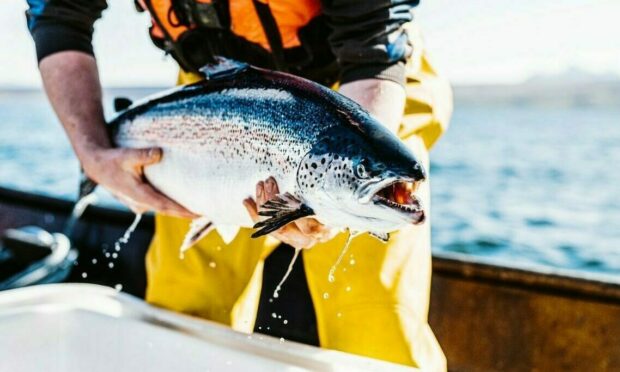
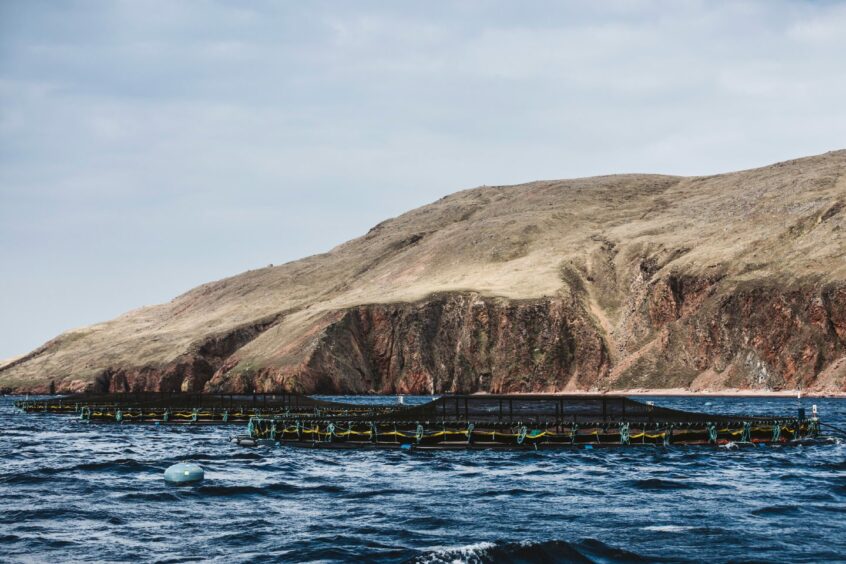
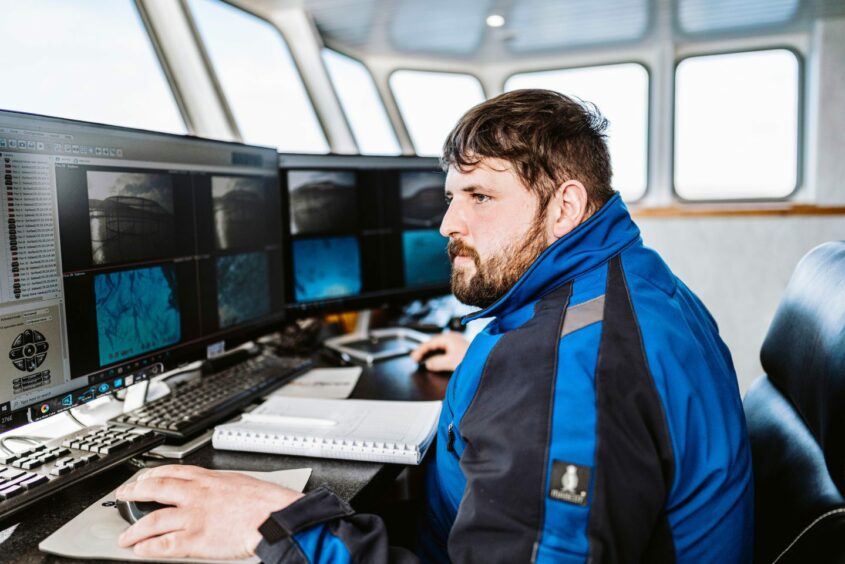
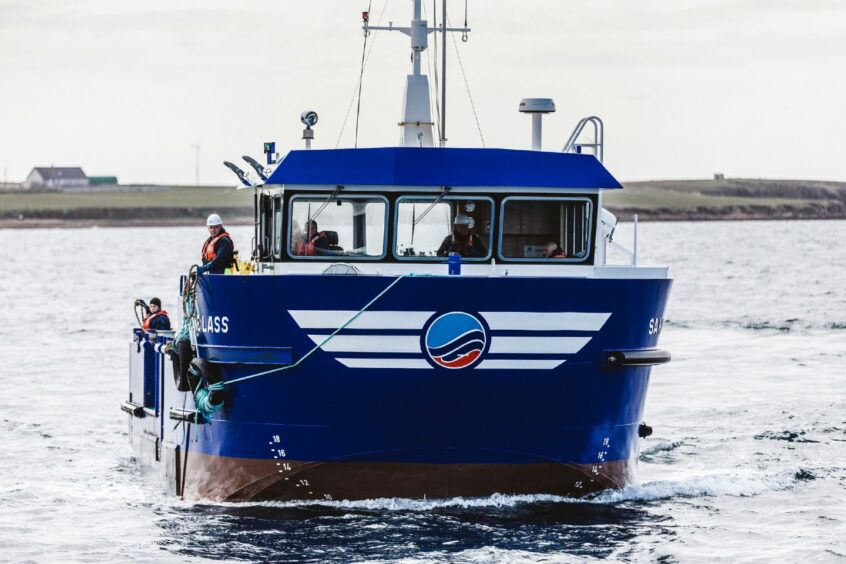
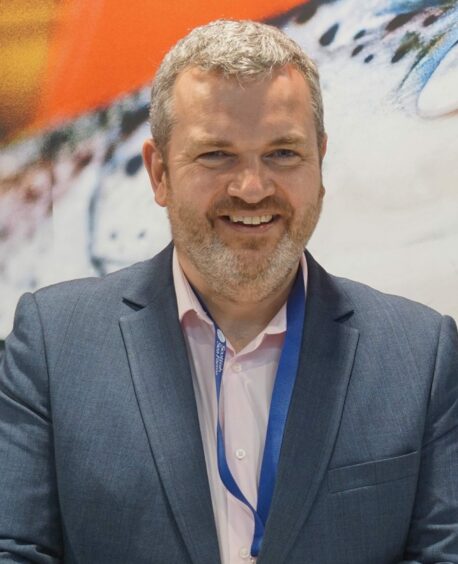
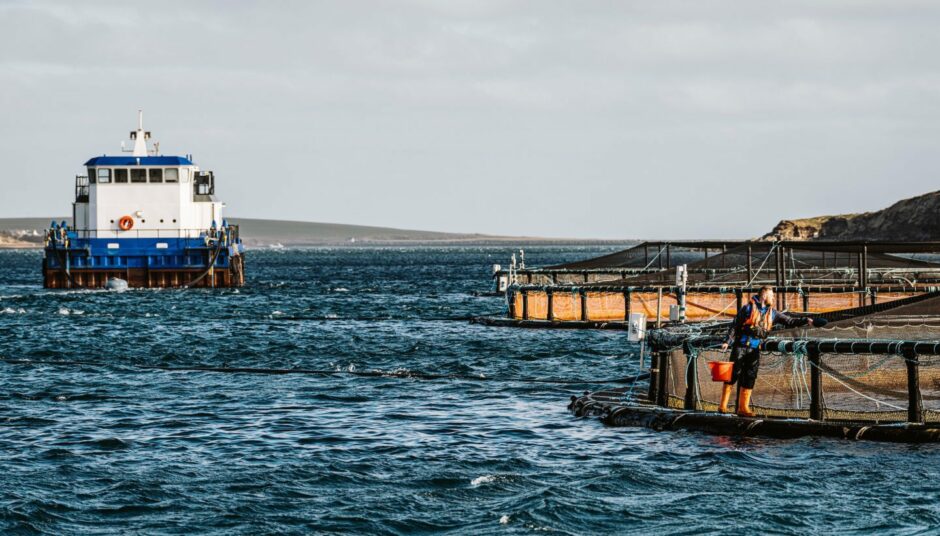
Conversation